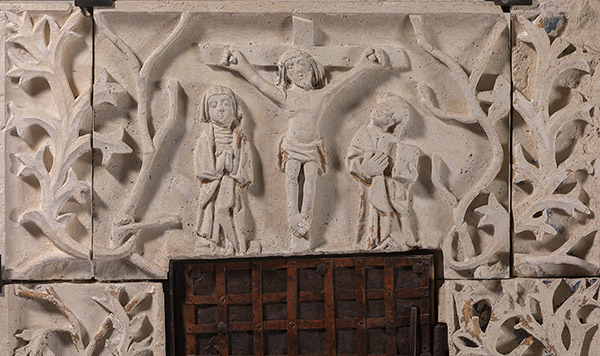Grandival wall tabernacle
Grandival wall tabernacle
Typologically speaking, this is a sacrarium or wall tabernacle. Gothic tabernacles were always located in the central wall or Gospel side of the presbytery. This particular tabernacle is presided over by the scene of the Calvary accompanied by angels and cardinals. The images were polychromed, but only small traces of paint and gilding remain. It is the work of a sculptor with many limitations, although its charm lies precisely in its awkwardness. The stiffness of Christ, with his feet twisted inwards, his cloth of purity – which falls to the sides – the gestures of Mary – with her fingers intertwined – and the turned head of Saint John or the angels’ hair – tight on the skull and flowing outwards at the base – place this work in the late Gothic style of around 1475-1500.
According to ecclesiastical regulations, they had to be closed by a grille door with a relatively artistic lock. This type of Eucharistic tabernacle became widespread throughout Europe during the 13th, 14th and 15th centuries, but because of their poor preservation conditions for sacred items and other Eucharistic motifs, they were replaced by wooden ones after the Council of Trent, which led to their almost total disappearance.


